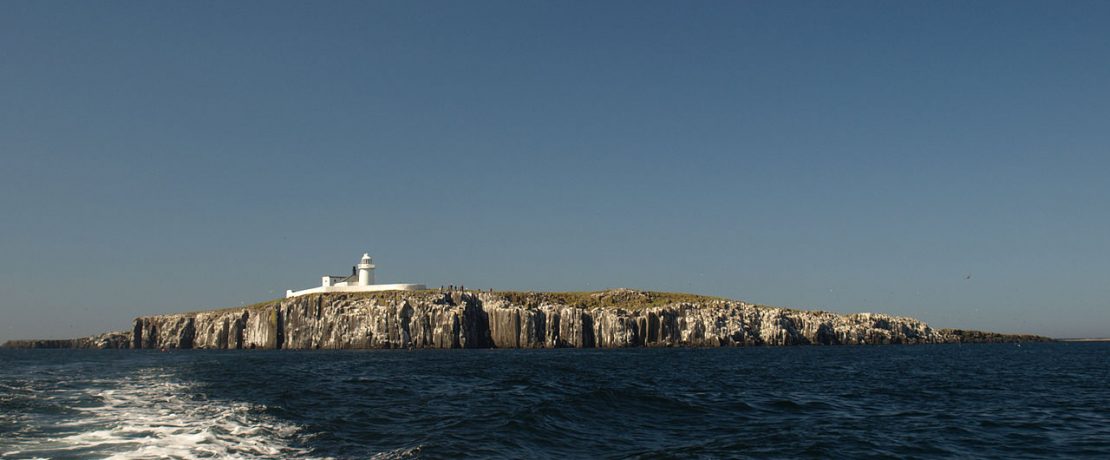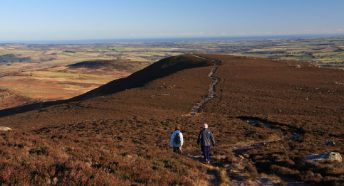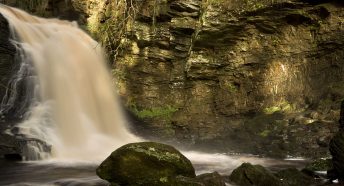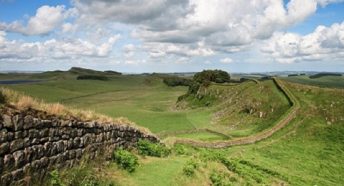The Farne Islands
The Farne Islands off the north coast of Northumberland are an ecological gem, with a long history. Formed millions of years ago, an extension of the Whin Sill, the ‘vein’ of basaltic rock that traverses Northumberland and provides spectacular outcrops supporting the Roman Wall and Bamburgh Castle, these craggy islets are today home to 22 species of breeding birds and a colony of up to 600 grey seals.
The birds most commonly seen on the Farnes are puffins and Arctic terns (the rarest was an Aleutian tern spotted in May 1979, the only sighting ever in Europe). Puffins, with their sad eyes and colourful plumage are everybody’s favourites – but they are aggressive enough to drive rabbits out of their burrows in spring each year to commandeer them for nesting holes.
Sadly, one of the effects of global warming – the rise in temperature in the North Sea – is driving sand-eels further north each year, and in about forty years’ time, experts predict, the puffins (which feed on them) will have left the Farnes for breeding grounds in the Orkneys and Shetlands.
The history of the Farnes links the ancient capital of Bernicia at Bamburgh with a religious settlement on Inner Farne, favoured as a retreat by St Aiden and, after him St Cuthbert, who in 676 passed a law to protect eider ducks from hunters (possibly the world’s first bird conservation law).
The Farnes, however, have been throughout modern times a dread to seafarers in the North Sea. Numerous lighthouses have been established in an effort to warn sailors of potential danger, but wrecks were all too common in past times. One particular lighthouse, the Longstone, has for 182 years been famous for its association with a story of outstanding courage that is still told today.
In the 1830s the keeper of the Longstone light, William Darling, lived on the island with his family of twelve children, the oldest being a 22 year old daughter called Grace.

One night in September 1838, in the teeth of a North Sea storm, the SS Forfarshire, an early steamship carrying a cargo and about 60 passengers, ran aground on one of the smaller Farne islands and began to break up. Many of the passengers and crew were drowned (including the Captain), though a handful got away on the ship’s boats. Another group, thirteen in all, managed to get to an exposed rock and cling on through the night.
At dawn, they could just be seen by William Darling and his daughter from the lighthouse about 600 yards away. Against his better judgement, William was persuaded by his 22 year old daughter to face the massive risk of rowing a heavy boat out into choppy seas in a desperate rescue attempt. Magnificently they managed it, rowing by a circuitous route of about a mile (to avoid reefs), but when they got to the rock they found just nine people left, including a woman whom Grace attempted to console after learning that she had lost her two children to the waves. They took her and three others off, and got them safely back to the lighthouse, at which point William, assisted by two crewmen, went back and rescued the rest.
The inspiring story of the Darlings, one Northumbrians are justly proud of, adds another layer of interest to these fascinating islands. A trip to the Farnes by boat from Seahouses is a treat not to be missed.
Grace Darling is commemorated by a memorial in Bamburgh churchyard, and a museum in Radcliffe Road, Bamburgh.








